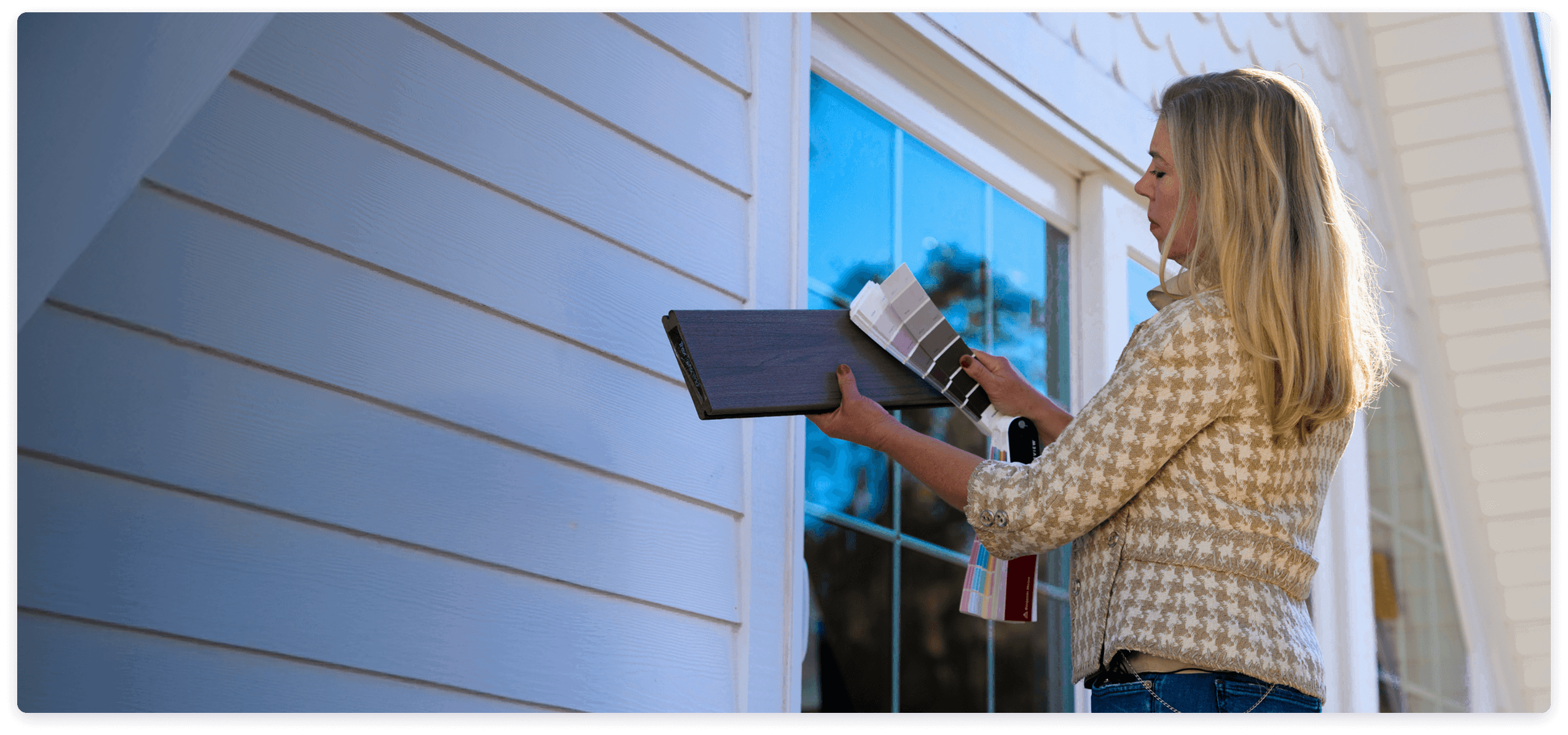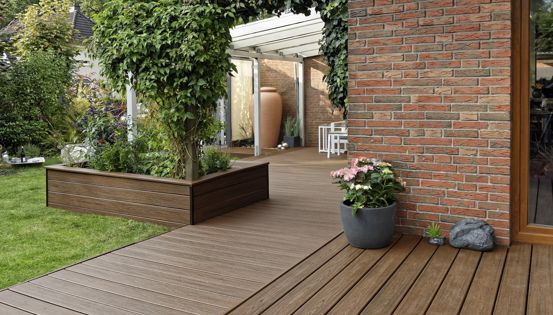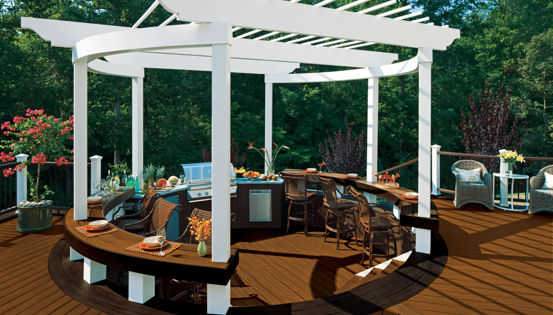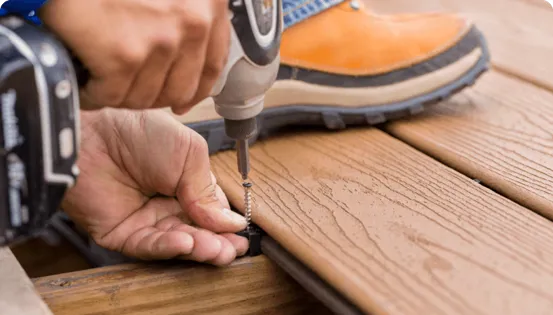It is possible to increase your beam spans and eliminate footings and structural posts for your deck by using engineered laminated beams, heavy timbers or steel I girder beams. Using an engineered beam will reduce the number of posts blocking windows under a deck or may provide a clear span for a deck over a driveway. These beams are designed much stronger and more stable than standard dimensional lumber beams. It is possible to achieve spans up to 20 feet. Engineered beams must be treated for use outdoors.
Glulam beams are manufactured by gluing layers of dimensional lumber together. Parallam beams are manufactured by gluing together aligned wood stands and bonding them using a microwave process.
Large, solid sawn lumber timbers, referred to as “heavy timber” are available, but may be expensive to obtain in decay-resistant species if desired or necessary.
Your local lumberyard should be able to help you size and order engineered deck beams. Bring them a plan of your deck with dimensions showing the position of all your footings and posts. They will send your information to a design center where an engineer will specify the proper size engineered beam. They will also provide a report which will be useful in applying for building permits. Engineered beams are more expensive than standard deck framing materials but are usually the only option for projects that demand long beam spans.
Glue Laminated Timber Beams Spans
| Joist Spans | |||||||||
|---|---|---|---|---|---|---|---|---|---|
| Stress Class | Width | Depth | 6' | 8' | 10' | 12' | 14' | 16' | 18' |
Balanced or Unbalanced 20F -1.5E And Higher Grade Cedar | 3-1/2" | 9-1/2" | 12'-2" | 10'-6" | 9'-4" | 8'-6' | 7'-10' | 7'-4" | 6'-11" |
| 11-7/8" | 15'-2" | 13'-1" | 11'-8" | 10'-8" | 9'-10" | 9'-2" | 8'-8" | ||
| 16" | 17'-10" | 15'-5" | 13'-9" | 12'-7" | 11'-7" | 10'-10" | 10'-2" | ||
| 5-1/4" | 9-1/2" | 18'-0" | 16'-8" | 14'-10" | 13'-7" | 12'-6" | 11'-8" | 11'-0" | |
| 11-7/8' | 18'-0" | 18'-0" | 17'-6" | 15'-11" | 14'-9" | 13'-9" | 13'-0" | ||
| 16" | 18'-0" | 18'-0" | 18'-0" | 18'-0" | 16'-10" | 15'-9" | 14'-10" | ||
Unbalanced 24F - 1.8E Douglas Fir - Larch or Southern Pine | 3-1/2" | 9-1/2" | 13'-11" | 12'-1" | 10'-9" | 9'-10" | 9'-1" | 8'-6" | 8'-0" |
| 11-7/8" | 17'-5" | 15'-1" | 13'-5" | 12'-3" | 11'-4" | 10'-7" | 10'-0" | ||
| 14" | 18'-0" | 17'-9" | 15'-10" | 14'-5" | 13'-4" | 12'-6" | 11'-9" | ||
| 5-1/4' | 9-1/2" | 18'-0" | 18'-0" | 17'-1" | 15'-7" | 14'-5" | 13'-6" | 12'-8" | |
| 11-7/8" | 18'-0" | 18'-0" | 18'-0" | 18'-0" | 17'-0" | 15'-10" | 14'-11" | ||
| 16" | 18'-0" | 18'-0" | 18'-0" | 18'-0" | 18'-0" | 18'-0" | 17'-0" | ||
Balanced 24F - 1.8E Douglas Fir - Larch or Southern Pine | 3-1/2" | 9-1/2" | 13'-11" | 12'-7" | 11'-8" | 11'-0" | 10'-5" | 9'-11" | 9'-7" |
| 11-7/8" | 17'-5" | 15'-10" | 14'-8" | 13'-9" | 13'-1" | 12'-6" | 12'-0" | ||
| 14" | 18'-0" | 18'-0" | 17'-4" | 16'-3" | 15'-5" | 14'-9" | 14'-2" | ||
| 5-1/4" | 9-1/2" | 18'-0" | 18'-0" | 17'-4" | 16'-3" | 15'-5" | 14'-9" | 14'-2" | |
| 11-7/8" | 18'-0" | 18'-0" | 18'-0" | 18'-0" | 18'-0" | 17'-6' | 16'-9" | ||
| 16" | 18'-0" | 18'-0" | 18'-0" | 18'-0" | 18'-0" | 18'-0" | 18'-0" | ||
Assumes 40 psf live load, 10 psf dead load, L/360 simple span beam deflection limit, cantilever length/180 deflection limit. Glued laminated timber shall be naturally durable or preservative treated with an oil-borne treatment in accordance with AWPA U1.







